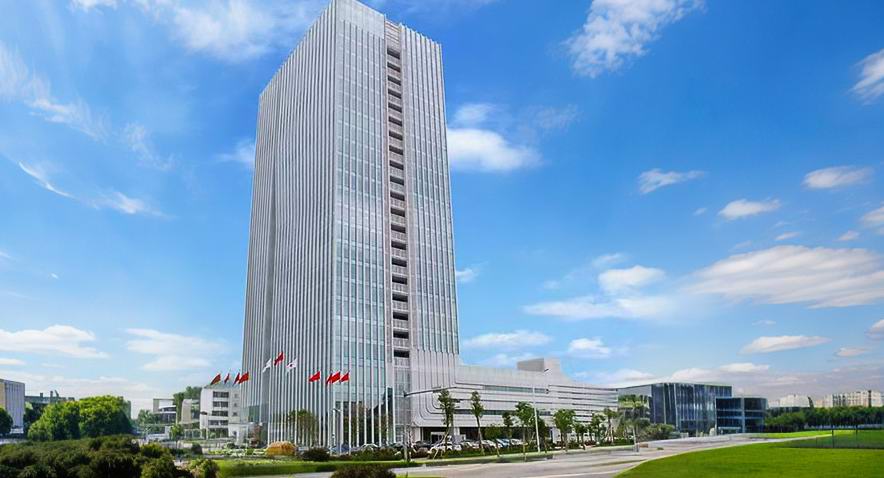How to Leverage High-tech Zones for Growth

High-tech zones represent hubs of innovation and economic growth. These zones foster technological advancements and attract businesses seeking cutting-edge opportunities. The National High-tech Industrial Development Zones in China have played a pivotal role in this transformation. Over 115,000 high-tech companies thrived in these zones by 2021. The zones' contribution to China's exports has surged from 3.2% in 2012 to 24.4% in 2021. The Zhongkai High-tech Zone National Foreign Trade Tra exemplifies this growth, with over 50,000 businesses established. These zones drive regional progress, though some areas face challenges.
Understanding High-tech Zones
Definition and Characteristics
What are High-tech Zones?
High-tech zones serve as centers for innovation and technological advancement. These zones focus on the development of high-tech industries. The establishment of high-tech zones aims to promote scientific progress and foster emerging industries. National high-tech zones host a significant number of China's State Key Laboratories. These zones also house national technological innovation centers.
Key Features and Attributes
High-tech zones possess distinct features that drive growth. These zones offer advanced infrastructure and resources. High-tech zones provide access to quality science and technology talent. These zones facilitate collaboration between businesses and research institutions. High-tech zones also encourage investment in technological advancements.
Importance in Economic Development
Role in Technological Advancements
High-tech zones play a crucial role in technological progress. These zones promote independent innovation and emerging industries. High-tech zones contribute to the development of new technologies. These zones support research and development activities. High-tech zones also enhance the competitiveness of local industries.
Contribution to Local Economies
High-tech zones significantly impact local economies. These zones drive economic growth through technological progress. High-tech zones increase exports and attract foreign investments. These zones create job opportunities and boost local employment. High-tech zones also stimulate regional development and prosperity.
National High-tech Industrial Development Zones

Overview of National High-tech Industrial Development Zones
Historical Context and Growth
National High-tech Industrial Development Zones have transformed China's economic landscape. These zones emerged in the late 1980s as part of a strategic initiative. The goal was to foster technological innovation and economic growth. Over time, these zones have become home to over 50,000 businesses. Nearly 2,000 national high-tech enterprises operate within these areas. The zones have played a pivotal role in establishing China Speech Valley. This is the first national-level artificial intelligence industrial park. The zones are also known as the Quantum Center due to their pioneering quantum technology industry.
Current Landscape and Distribution
Today, National High-tech Industrial Development Zones cover vast regions across China. The zones house 84 percent of China's State Key Laboratories. They also accommodate 78 percent of the national technological innovation centers. By the end of 2021, these zones had over 4,400 research institutions. A workforce of 5.63 million researchers contributes to ongoing innovation. The zones provide a fertile ground for scientific and technological advancements.
Significance of National High-tech Industrial Development Zones
Impact on Innovation and Technology
National High-tech Industrial Development Zones drive technological progress. These zones promote scientific and technological advancements. Independent innovation flourishes within these environments. The development of emerging industries receives substantial support. The zones offer tax incentives and talent subsidies. Bank credits further facilitate innovative development. Changsha's high-tech zone in Hunan province plans to invest 1 billion yuan over the next three years. This investment aims to attract top talent and bolster innovation.
Economic Contributions
National High-tech Industrial Development Zones contribute significantly to China's economy. The zones stimulate economic growth through technological innovation. Businesses within these zones benefit from a supportive ecosystem. The zones enhance competitiveness and drive exports. Local economies thrive due to job creation and increased employment opportunities. The zones play a crucial role in regional development and prosperity.
How to Leverage High-tech Zones for Business Growth
Accessing Talent
Building a Skilled Workforce
High-tech zones offer an abundance of skilled professionals. Businesses can tap into this talent pool to build a competent workforce. Companies should establish training programs to enhance employee skills. High-tech zones provide access to cutting-edge technologies and resources. Organizations can leverage these assets to train employees effectively.
Collaborating with Local Universities
Local universities in high-tech zones serve as valuable partners. Businesses can collaborate with these institutions for research and development. Universities offer access to talented students and faculty. Companies can engage in joint projects to foster innovation. Partnerships with universities can lead to groundbreaking discoveries.
Utilizing Local Resources
Leveraging Infrastructure
High-tech zones boast advanced infrastructure. Businesses can utilize these facilities to streamline operations. State-of-the-art laboratories and research centers are available. Companies can access these resources to accelerate product development. High-tech zones provide the necessary tools for technological advancement.
Engaging with Local Suppliers
Local suppliers in high-tech zones offer quality materials and services. Businesses can form partnerships with these suppliers for efficient production. Proximity to suppliers reduces transportation costs and time. Companies can benefit from reliable supply chains and timely deliveries. Engaging with local suppliers enhances operational efficiency.
Engaging with Innovation Ecosystems
Participating in Tech Clusters
Tech clusters in high-tech zones foster collaboration among businesses. Companies can join these clusters to share knowledge and resources. Participation in tech clusters leads to increased innovation. Businesses can gain insights from industry peers and experts. Tech clusters provide a platform for collective growth and development.
Networking with Industry Leaders
Networking opportunities abound in high-tech zones. Businesses can connect with industry leaders and pioneers. These interactions offer valuable insights and guidance. Companies can learn from the experiences of successful entrepreneurs. Networking fosters relationships that drive business growth and innovation.
Real-world Examples and Case Studies

Successful Businesses in High-tech Zones
Case Study 1
iFlight stands as a remarkable example of success within a high-tech zone. iFlight operates from Huizhou City in the China Greater Bay Area. This strategic location offers direct access to suppliers and raw materials. The company benefits from a young and creative talent pool. iFlight has grown from a small office to a global workforce since 2014. The company leverages local resources to create innovative FPV drones. These drones cater to videography, entertainment, racing, and education sectors. iFlight empowers creators with tools to bring ideas to life.
Case Study 2
Chengdu Hi-tech Industrial Development Zone showcases another success story. Established in 1988, the zone became a national high-tech zone in 1991. The zone focuses on technological innovation and economic growth. Over time, the zone has attracted numerous high-tech enterprises. The Chengdu zone plays a pivotal role in China's technological advancements. The zone supports research and development activities. Businesses within the zone benefit from a supportive ecosystem. The zone enhances competitiveness and drives exports.
Lessons Learned from Industry Leaders
Key Takeaways
Strategic Location Matters: Businesses thrive in high-tech zones due to strategic locations. Proximity to suppliers and resources boosts operational efficiency.
Access to Talent: High-tech zones offer access to skilled professionals. Companies can build a competent workforce by tapping into this talent pool.
Innovation Ecosystems: Participation in tech clusters fosters collaboration. Businesses gain insights from industry peers and experts.
Infrastructure and Resources: Advanced infrastructure supports technological advancement. Companies can accelerate product development using state-of-the-art facilities.
Best Practices
Engage with Local Universities: Collaborate with universities for research and development. Joint projects with talented students and faculty lead to innovation.
Leverage Local Suppliers: Form partnerships with local suppliers for efficient production. Reliable supply chains enhance operational efficiency.
Network with Industry Leaders: Connect with pioneers and successful entrepreneurs. Networking provides valuable insights and guidance for business growth.
Invest in Employee Training: Establish training programs to enhance employee skills. Access to cutting-edge technologies and resources aids effective training.
High-tech zones offer significant opportunities for growth. These zones drive innovation and economic development. Businesses can thrive by leveraging these strategic locations. High-tech zones provide access to quality talent and advanced infrastructure. Companies can enhance competitiveness and foster technological advancements. Consider high-tech zones as a strategic component of growth plans. Engage with local resources and innovation ecosystems. Collaborate with universities and industry leaders. High-tech zones hold the key to unlocking new business potential. Embrace the advantages of these hubs for sustained success.
See Also
Exploring Potential in Huizhou Zhongkai High-tech Zone
Fostering Creativity: Huizhou Zhongkai High-tech Zone and the Path to Superior Growth
Emergence of Zhongkai High-tech Zone: An Examination of Industrial Progress
The Ascendancy of Zhongkai High-tech Zone: A Flourishing Tech Hub
Advancement and Prosperity of Zhongkai High-tech Zone: A Key Hub for Trade Evolution and Enhancement
Zhongkai High tech Zone National foreign trade transformation and Upgradi Base(Electronic Information)Cloud Platform.
Address: Zhongkai High-tech Zone,Huizhou City ,Guangdong,China
E-mail: huizhoueii@163.com 13510001271@163.com
Tel: +86-0752-3279220 Mobile: +86-13510001271


